Text and photographs by Veronika Marquez.
One day while I was assisting the master of photographic reportage class, we were looking at a work that dealt with prostitution. Everybody was talking about the quality of the work, about how good the photographs were and what an adventure it must have been for the photographer to have been there.
I went through such an experience more than once. When I looked at those photographs the only thing I felt was anger, distress and impotence because those photographs were a lie for me, part of a reality captured through the eyes of a photographer who surely believed he was very good for just having been able to be there.
I understand that there are stories that deserve to be reported, however, this does not only happen in the lives of prostitutes; we are not all victims and not all of us were mistreated.
I knew this world, I spent several years in it, got to know about 400 girls and more than 20 places with different characteristics but I never came across somebody with the characteristics shown in these photographs.
Why always choosing the same face, why all prostitutes have to appear as wretched, why always show them as poor, why always this sensationalism to put these girls in situations of misfortune?
I could assure that these photographs are far cry away from what I experienced.
This was one reason that made me move away from the photographic reportage. I thought: the day that I would have to take photographs, let’s say of “gypsies”, I would go to live with them, eat with them and even have some gypsy friends, however, in my photographs only my view of them would be reflected, their reality passed through my filter with already preconceived social ideas. Certainly, a gypsy who would look at my work would not find himself reflected in it.
All this made me feel powerless because I realised how little we are able to know about others and how arrogant we are to think that we see everything.
In my capacity as a photographer that I am now, I knew that I had a story to tell. I knew that I could speak better of something that I really had lived through myself and that it would be better than just to intrude into the life of someone else with a view from outside.
Time passed and I continued making similar works avoiding thinking about it. However, there came a moment when I was confronted again with this issue and with more force. As a photographer I had to tell it.
My life was already “normal”, the past far behind me, when I started to brood a lot about the decision of changing my life again and of abandoning the supposed tranquillity that I had achieved. The challenge was to start to explore avenues whose ends escaped from my ultimate control. I was afraid of being rejected by the people close to me but I was aware that if they would really like me, they would accept me how I am, with my past and present, and that if persons would be left behind on my way, it was because it was meant to be like that.
This was how the decision was taken. I had to speak about it. There was no way back.
I knew, in principle, how to tell the story and wanted to avoid falling into a cliché.
It took me along time before starting to take my first photographs.
I spent one year thinking about how to tell it: I recurred to images of the past, was faced with many questions, relived my story from the very beginnings when I was 16 years old, and asked myself why I had done it.
There were many things to be told, I visited many places of which each had its own set of rules, and this is the strongest weapon for walking with security through these worlds. I had made the acquaintance of so many girls with their stories, and many men, and through them their women and children. It was impossible for me to show all of it in the photographs. I could have written a book but to make photographs proved to be more difficult than I had thought.
I still had access to places that I used to frequent, I could have used them, I could have included some sex or resorted to some strong images. In principle, this would have been the easiest thing to do, however, it would have meant, for my taste, to fall into vulgarity. I looked for something different for my work.
I spent hours thinking, reliving everything. Months had passed and “Camila”, my old nom de guerre, resurged from the past. Now she was there, past and present together.
So I started with some test photographs. I already had a clear conception: the two of us would be together. I realised this in my photographs.
I continued the dialogue with my other character, talking to her, talking to myself I realised that almost everything that I am know I learnt from that former life. Walking through dangerous worlds is like walking through the jungle without so many masks; everything is more humane, revealing the true nature of our existence. Camila had to learn as she went along how to deal with all sorts of people, with danger and adventure. Every day she learned through the contact with people how to resolve negative situations, and I preserved what was good for her.
Now we were two in the photographs and both of us were very much alive. Being there together the two of us as if we were friends – and we were friends – today, at my place, in Madrid or in Montevideo, made it feel as if all this time had served to find and to accept us.
I search for the framing, use a 50 mm lens to avoid deformations and mount the camera on a tripod. I measure the light where I imagine my girls would be. I had previously made performance photography, and had used in my photographs self-performance and self-portrait. So I placed myself as the person that I am today, Verónica, and then as Camila. Same scene, same person, with past and present, I combine them with Photoshop in order to obtain the final idea.
The first photograph I took was at Christmas.
The plant visible on the photograph can be seen a lot in Spain during this season. It was taken just a few days ago since I received it as a present. The photograph is simple: Camila and I are there at my place in Madrid, talking about our matters while I look after the plant.
There we are. Camila tells Vero things, most likely how she spent the last night and whom she met. Vero prepares a mate for them so that they can start a new day together.
I am aware that my photographs are subtle: a simple glance will not do. Nobody could know that this is self-portrait photography, that we are the same person. I use the same resource as in the press: the text modifies the look on the photograph.
This is also true for Camila. It is necessary to read this bottom of the page, to read this text in order to understand what the photographs are about.
The colours are bright, subtle, even a bit saturated. Everything is clean, in all photographs there is light because I want to pull Camila, this prostitute girl, out of the darkness.
Every photograph has its shadow, its space. Both girls are present in my photographs, and those who look at them cannot deny it.
I end my work with a video.
The technique used is the same as for the photographs: a tripod-mounted camera and off the action goes. I took different scenes, which I edited with a video-editing programme later.
I thought of it as being dance choreography. There was a script with actions that repeated themselves with their own times and rhythms.
I must admit that my original idea had been different. I do not remember how it was but I know that the idea of two screens did not exist. What came last was the script with the actions to be performed as if they were a choreography: putting on the makeup, arranging my hair and putting on the wig. The sequence consisted in dressing myself as Camila and undressing myself as Verónica.
I took the takes and returned with the material home. When seeing all the scenes separately, almost without thinking about it, the video was finished. I arrived with the material I had to the final composition almost by way of magic.
With Santoral del Sábado, a poem by the Mexican writer Jaime Sabines, I pay tribute to my old profession.
I read the poem of this video some time ago in Montse’s blog, a girl form Barcelona, who is still working as a prostitute, and fell in love with it.
I learned the poem by heart, rehearsed it as if it were a theatre monologue, and the body started to find a away of accompanying it. Tripod-mounted camera, two spotlights and off the filming went.
At present, when I show my work, people usually thing that I have realised my full potential as photographer. I honestly believe that the work of a photographer, as many other professions, can at times become degrading if we have to make the impossible to sell our photographs, when we are paid so little without taking into account the involved work. Instead, I should shout with Camila from the rooftops that I have never felt humiliated, unworthy or unfree in my previous profession. Quite the opposite, I was free of moral and aesthetic prejudice, free to spend my free time as I wanted.
Today, I am the same person with a new set of rules who acts in the same way as back then.
Please visit Veronika Marquez for more photographs.

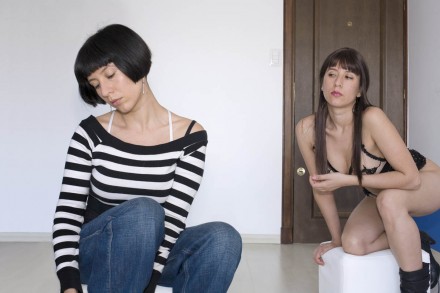
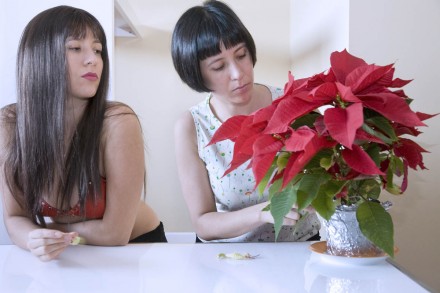
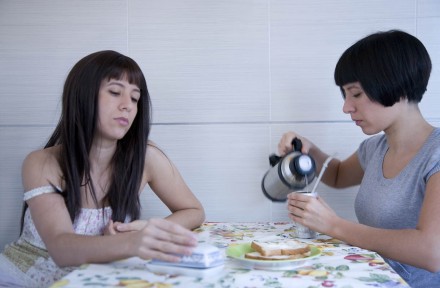

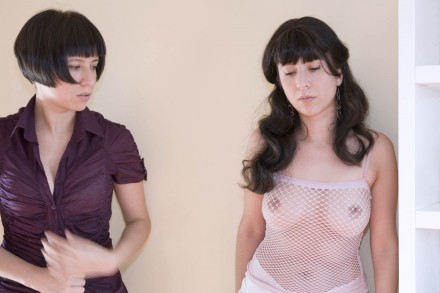


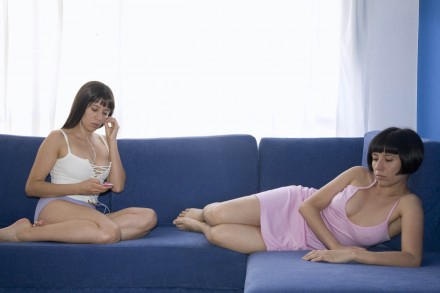
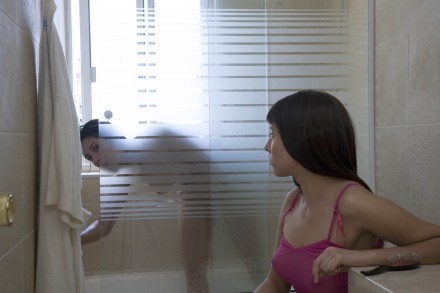
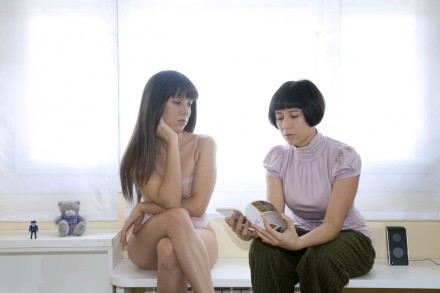
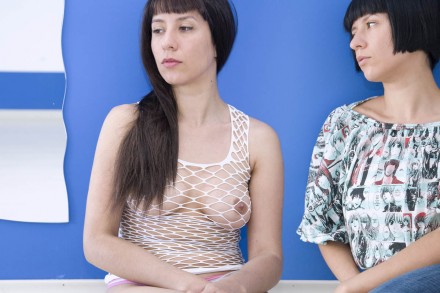
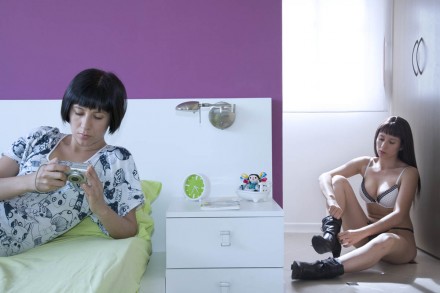
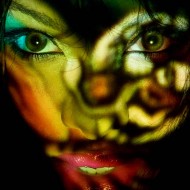
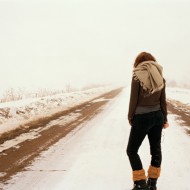
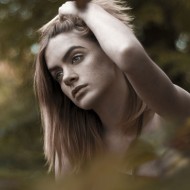
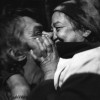






























EXcelente trabajo, VeróniKa!
Gracias por este texto sensible, sincero e inteligente Verónika
un beso grande
excelente trabajo, me gusta la sinceridad con que te expresas Verónika me encanto
You can also subscribe to this post comments RSS feed.